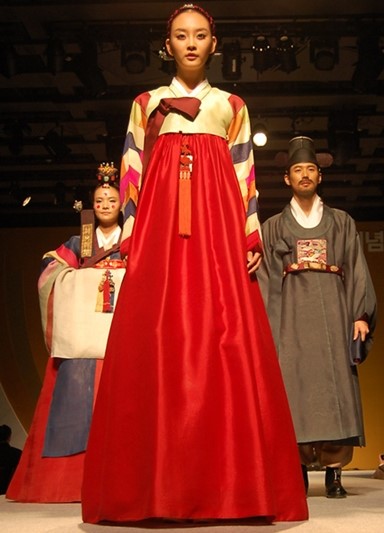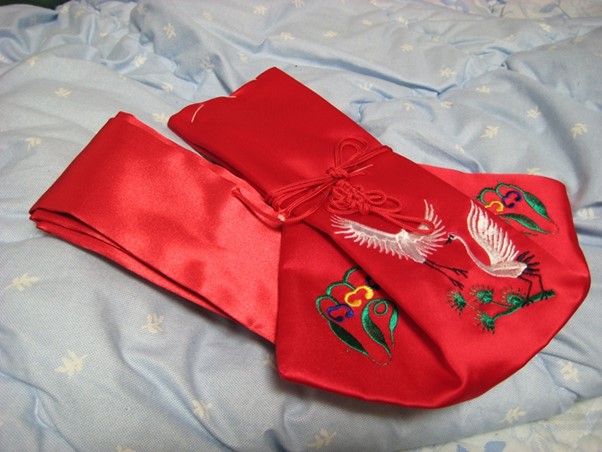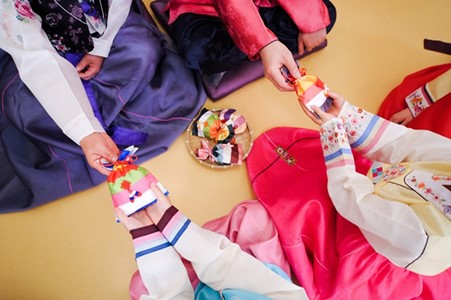- 한국어
- English
- 日本語
- 中文
- العربية
- Español
- Français
- Deutsch
- Pусский
- Tiếng Việt
- Indonesian
By Honorary Reporter Paola Corpus from Mexico
Hanbok is traditional Korean costumes with vibrant and eye-catching colors. In the past, the clothing was worn daily and the colors indicated social class, age or even the marital status of a woman.
Nowadays, Koreans wear Hanbok only for important events or celebrations, and the garment no longer has a place in everyday life in the country. One peculiarity remains with Hanbok: no pockets. Enter the bokjumeoni, which literally means "lucky pouch."

Traditional Hanbok is usually worn on special occasions. (Korea.net DB)
This pouch was used by Koreans in the past to carry small objects, especially coins. It is made of silk or even cotton and features vibrant and typical colors from East Asian culture such as blue, pink, yellow, red and white. The accessory is embroidered with patterns believed to bring good luck or Chinese characters meaning joy, wealth, longevity and fortune.

This pouch is called gwijumeoni (ear pouch) with the embroidered crane and pine symbolizing longevity. (Wikipedia commons)
The two types of bokjumeoni for use while wearing Hanbok are durujumeoni (round pouch), which is like a small purse, and gwijumeoni (ear pouch), which is in the style of an envelope and usually rectangular with two pieces of fabric on the sides serving as "ears."
Traditionally, bokjumeoni is used on Seollal (Lunar New Year) or Chuseok (Korean Thanksgiving). On both holidays, children bow to elders, who give them money as a gift called sebaedon (New Year's money) that goes into the bokjumeoni.

Children receive their durujumeoni (round pouches) filled with sebaedon (New Year's money) on both Seollal (Lunar New Year) and Chuseok (Korean Thanksgiving). (Korea Tourism Organization)
Over the years, the tradition of giving money has changed. Nowadays, most Koreans don't put gift money in the pouches, and few use a bokjumeoni. Nonetheless, the item remains a nice piece of Korean tradition and a travel souvenir meaning good fortune and success.
enny0611@korea.kr
*This article is written by a Korea.net Honorary Reporter. Our group of Honorary Reporters are from all around the world, and they share with Korea.net their love and passion for all things Korean.